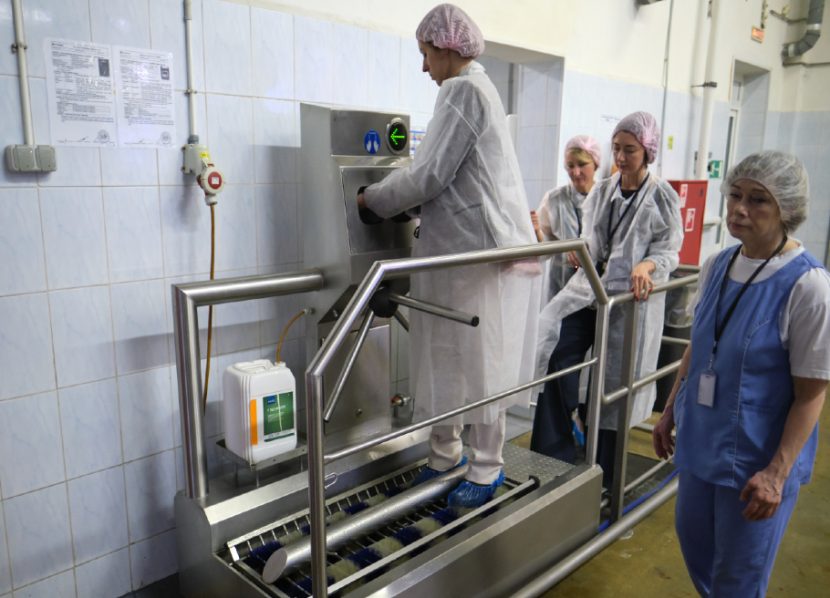Catastrophic Failure: Lessons Learned from the Top 5 Food Safety Events
Content Produced by GFSR
Over the past 25 years, the food industry has witnessed several food safety incidents that have had severe consequences for public health and consumer trust. These incidents serve not only as reminders of the importance of rigorous food standards but also highlight the critical things that food businesses should pay attention to when it comes to product safety.
The Peanut Corporation of America (PCA) Salmonella Outbreak (2008-2009):
The PCA salmonella outbreak resulted in one of the largest food recalls in U.S. history. Contaminated peanut butter and peanut-based products manufactured by the PCA caused hundreds of illnesses and led to nine deaths, and company leaders went to prison.
These incidents serve not only as reminders of the importance of rigorous food standards but also highlight the critical things that food businesses should pay attention to when it comes to product safety.
The incident exposed failures in food safety protocols, including inadequate sanitation practices, lack of proper testing, and lackluster communication between stakeholders.
Lessons Learned: The importance of robust sanitation practices, regular testing, effective traceability systems, and open communication cannot be understated. Steps to take include:
- Implement a robust Environmental Monitoring Program (EMP). Food safety professionals need to ensure regular monitoring of the processing environment, including surfaces, equipment, and air quality. This program should involve sampling and testing for potential pathogens, such as salmonella, to identify any areas of contamination and take prompt corrective actions. Regularly review and analyze the monitoring data to identify trends, address areas of concern, and continuously improve sanitation practices.
- Strengthen supplier verification and testing protocols: Food safety professionals should develop a risk-based supplier verification program that includes comprehensive assessments of suppliers’ food safety systems, including their sanitation practices, testing protocols, and traceability measures. Establish clear criteria for supplier approval and regularly review their performance. Maintain open lines of communication with suppliers to address any concerns or non-compliance promptly.

The Blue Bell Ice Cream Listeria Outbreak (2015):
The Blue Bell ice cream listeria outbreak spanned multiple U.S. states and resulted in three deaths. Contaminated ice cream products were traced back to unsanitary conditions and inadequate testing procedures at Blue Bell Creameries. The incident highlighted the significance of comprehensive testing programs, proper sanitation practices, and regular equipment maintenance in preventing the spread of pathogens.
Lessons Learned: The critical need for rigorous testing, robust sanitation protocols, and ongoing equipment maintenance to ensure the safety of food products and prevent contamination by dangerous pathogens. Steps to take should include:
- Establish a detailed EMP that outlines specific sampling locations, frequencies, and testing methods. Utilize advanced testing techniques, such as swabbing and air sampling, to identify the presence of listeria or other pathogens. Implement a risk-based approach, prioritizing high-risk areas and conducting more frequent testing in those areas. Regularly monitor data and continually improve sanitation protocols.
- Strengthen sanitation practices and equipment maintenance. Develop clear Standard Operating Procedures (SOPs) for sanitation that cover all aspects, including equipment, utensils, surfaces, and employee hygiene. Provide comprehensive training to employees on proper sanitation and cleaning techniques, sanitizing agents, and frequency of cleaning. Implement a preventive maintenance program for equipment, ensuring regular inspections, cleaning, and calibration as necessary.
The Odwalla Apple Juice E. coli Outbreak (1996):
The Odwalla apple juice E. coli outbreak had a profound impact on the fresh juice industry in the United States. The contamination occurred due to the use of unpasteurized apple juice, which led to an outbreak of E. coli infections and the death of a young child. The incident raised awareness about the risks associated with consuming unpasteurized products and emphasized the importance of effective pasteurization processes for the juice industry.
Lessons Learned: Proper processing techniques, such as pasteurization, are critical in eliminating harmful bacteria and ensuring product safety. Steps to take should include:
- Implement effective pasteurization processes. Establish strict standard operating procedures (SOPs) for pasteurization that outline temperature and time requirements. Regularly calibrate and monitor temperature control systems and document pasteurization cycles, including temperature logs and validation data. Regularly audit and verify the effectiveness of pasteurization processes through microbial testing and validation studies.
- Leverage Hazard Analysis and Critical Control Points (HACCP) System: Conduct a comprehensive hazard analysis of the juice production process to identify potential sources of contamination. Establish critical control points (CCPs) to monitor and control identified hazards effectively, then monitor. Develop corrective actions and preventive measures for any deviations. Regularly review and update the HACCP plan to reflect changes in processes, ingredients, or regulations.
The Maple Leaf Foods Listeria Outbreak (2008):
The Maple Leaf Foods listeria outbreak in Canada resulted in one of the deadliest foodborne illness incidents in the country’s history. Contaminated deli meats produced by Maple Leaf Foods were responsible for multiple deaths and illnesses. The incident exposed weaknesses in sanitation practices, equipment maintenance, and the need for improved pathogen control measures in food processing facilities.
Lessons Learned: The significance of stringent sanitation protocols, regular equipment maintenance, and robust pathogen control measures to prevent listeria contamination and protect public health in the meat and food processing industry. Steps to take should include:
- Enhance sanitation and cleaning procedures: Establish detailed SOPs for sanitation. Develop cleaning schedules that outline frequency, methods, and appropriate sanitizing agents, and train employees. Implement regular audits and inspections to monitor compliance with sanitation protocols and identify areas for improvement.
- Strengthen pathogen control measures: A strong EMP is important. Utilize advanced testing methods, such as molecular techniques, to improve the accuracy and speed of pathogen detection. Establish clear thresholds for action in case of positive test results and develop a rapid response protocol to address issues swiftly.
The Chipotle E. coli and Norovirus Outbreaks (2015-2016):
The series of E. coli and norovirus outbreaks linked to Chipotle Mexican Grill restaurants in the United States resulted in hundreds of reported illnesses. The outbreaks were traced back to multiple factors, including contaminated fresh produce, inadequate employee training on food safety practices, and breakdowns in supply chain management.
Lessons Learned: The need for robust food safety training programs, rigorous supplier monitoring, and effective communication channels to prevent outbreaks and maintain food safety standards across a large restaurant chain. Steps to take should include:
- Implement Robust Training Programs: Food safety professionals develop a comprehensive training curriculum that covers all aspects of food safety, tailored specifically to the operations and menu items of the establishment. Conduct regular training sessions and emphasize the importance of following proper protocols at all times. Follow up with periodic refresher courses.
- Strengthen supplier monitoring. Establish comprehensive protocols to monitor suppliers, verify the safety and quality of ingredients, and ensure compliance with food safety standards. Additionally, maintaining open lines of communication with suppliers is crucial for prompt resolution of any safety concerns or non-compliance issues.
Lessons learned from these incidents include the importance of sanitation, environmental monitoring, comprehensive testing programs, stringent supplier monitoring, and effective employee training and communication across the supply chain. Technology like blockchain can also improve supply chain transparency, making it easier to identify and address potential risks.
If anything, these incidents remind us that the most important ingredient in food manufacturing is an unwavering commitment to food safety. By prioritizing effective sanitation practices, regular testing, impactful traceability systems, and open communication, food companies can protect public health, rebuild consumer trust, and mitigate the impact of potential outbreaks and safeguard the well-being of consumers worldwide.

-
 FeaturedRisk management
The Cost of a Breach: What a Cyberattack Could Mean for Food Safety Recalls
FeaturedRisk management
The Cost of a Breach: What a Cyberattack Could Mean for Food Safety Recalls
-
 FeaturedRisk management
Securing the Food Chain: How ISO/IEC 27001 Strengthens Cybersecurity
FeaturedRisk management
Securing the Food Chain: How ISO/IEC 27001 Strengthens Cybersecurity
-
 FeaturedRisk management
Revolutionizing Food Safety Training: Breaking Out of the “Check-the-Box” Mentality
FeaturedRisk management
Revolutionizing Food Safety Training: Breaking Out of the “Check-the-Box” Mentality
-
 GFSI Standards
GFSI 2025: Building Trust, Tech-Forward Solutions, and Global Unity in Food Safety
GFSI Standards
GFSI 2025: Building Trust, Tech-Forward Solutions, and Global Unity in Food Safety
-
 FeaturedFood Safety
Integrated Pest Management: Strategies to Protect Your Brand’s Reputation
FeaturedFood Safety
Integrated Pest Management: Strategies to Protect Your Brand’s Reputation
-
 FeaturedFood Safety Culture & Training
No Open Door Policy: Challenges That Impact Pest Control in Food Processing Plants
FeaturedFood Safety Culture & Training
No Open Door Policy: Challenges That Impact Pest Control in Food Processing Plants




